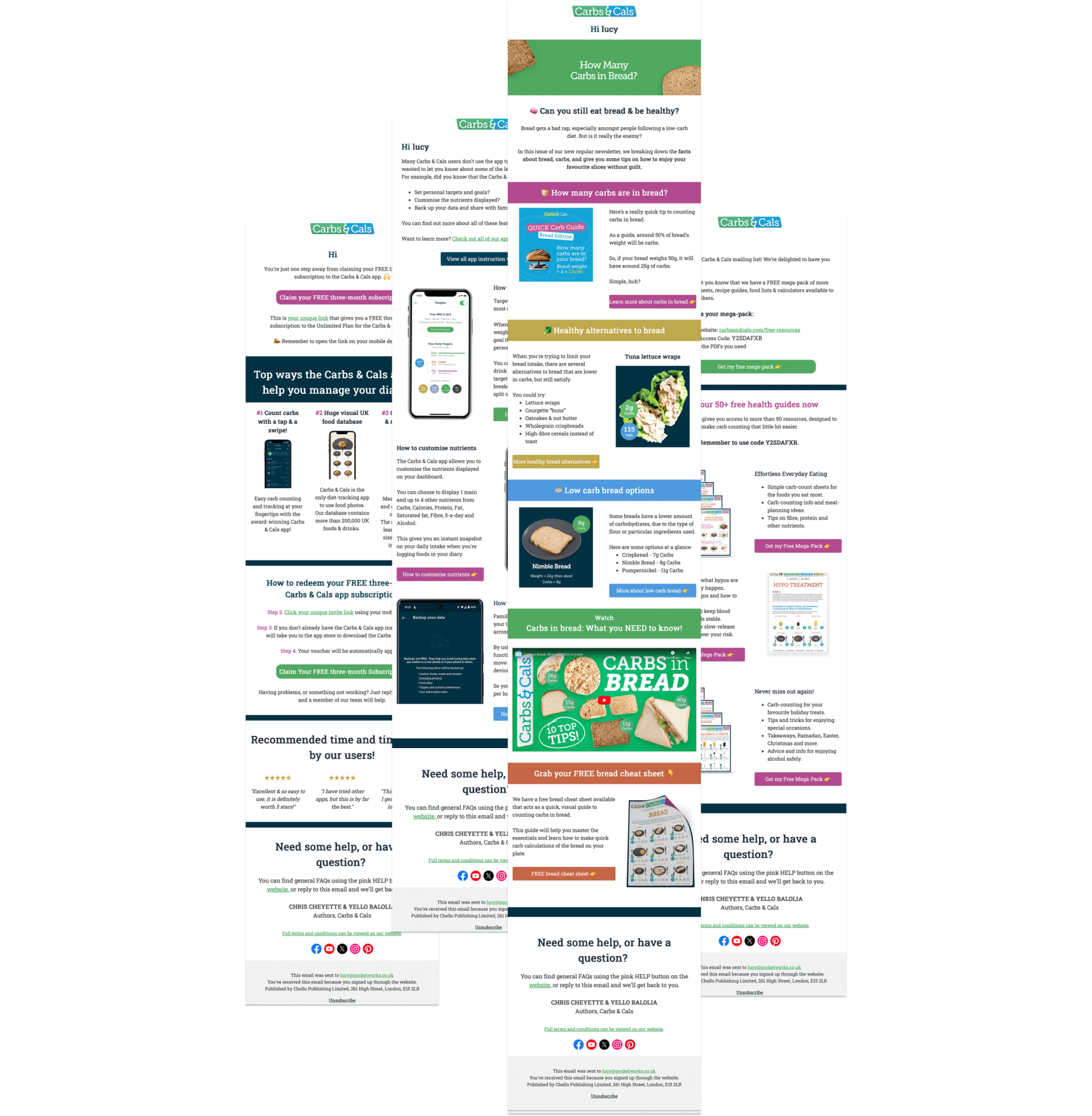Rice and grains serve as staple foods for billions of people around the world.
Whether you’re managing diabetes, following a low-carb diet, or simply want to make informed nutritional choices, understanding the carbohydrate content in different types of rice and grains is essential for effective meal planning.
In this guide, you’ll learn how portion sizes dramatically affect carbs in rice and grains and discover practical tips for incorporating these versatile foods into your carb-counting routine.
How to calculate carbs in rice
Many different types of rice are usually classified into short, medium and long grain. Rice is an important source of both carbohydrates and protein and, depending on the type of rice, can also contribute a significant amount of fibre to your diet.
Both white and brown rice contain varying amounts of resistant starch. Resistant starch increases butyrate in the gut, which boosts gut health. The amount of carbs in the rice you eat will depend on the type of rice and the serving size. The larger the portion of rice, the more carbs you will consume.
When calculating the amount of carbs in your portion of rice for your meal, you can use either the uncooked weight or the cooked weight. The Carb & Calorie Counter book and Carbs & Cals app have the carb values for both, as well as other nutrition facts. However, you may find it easier to use the cooked rice and compare it to one of the portion images in the book or app.
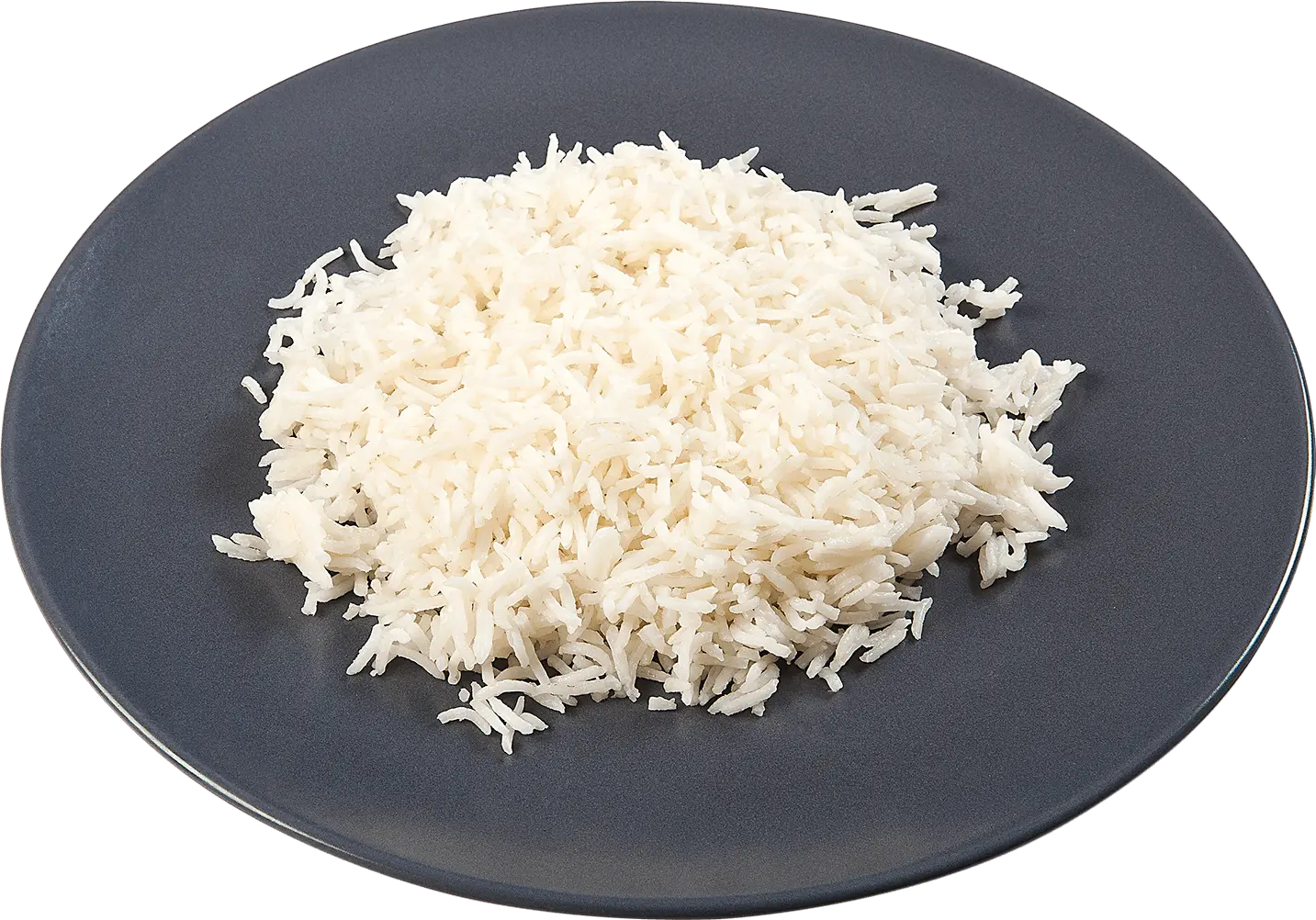
51g
Carbs
White Basmati Rice
Weight = 163g
Carbs = 51g / Cals = 233
Carbs in white rice
White rice is the most popular type of rice, which is derived from brown rice. The process required to turn brown rice into white rice requires the rice to undergo further milling, which removes the bran. However, this additional processing causes a loss of fibre and other nutrients that are found in brown rice. Some types of white rice are enriched to replace some of the lost nutritional value with added B vitamins.
Whether you are having short grain, basmati, or long grain white rice, the carb content will be similar. The glycaemic index may differ, with basmati rice typically having a lower glycaemic index.
In the examples below, you can see a medium portion of 3 different types of white rice that all have a similar carb content. However, the fibre content will be significantly lower than in brown rice.
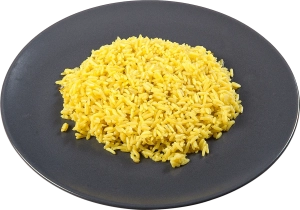
51g
Carbs
Basmati Rice
Weight = 163g
Carbs = 51g
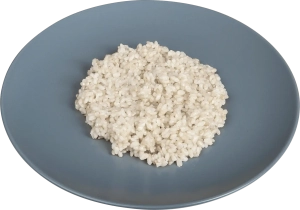
45g
Carbs
Short Grain Rice
Weight = 150g
Carbs = 45g
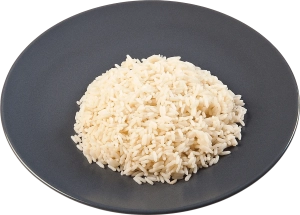
51g
Carbs
Long Grain Rice
Weight = 163g
Carbs = 51g
Carbs in brown rice
Brown rice is the go-to choice of rice for those maintaining a healthy diet, as it is considered to have more nutritional value than white rice. Brown rice is a whole grain and, as it still contains the bran, has a higher fibre content than white rice, helping you meet your recommended daily values of fibre. In addition, it is also a great source of magnesium and selenium.
Brown rice also has a lower glycaemic index, meaning the effect on blood sugar levels after a meal will be lower than white rice, helping to protect against heart disease. However, portion size is still the most important factor determining this.
A small portion of brown rice will typically contain around 30g of carbohydrates, while a medium to large portion will contain 45g to 70g of carbohydrates.
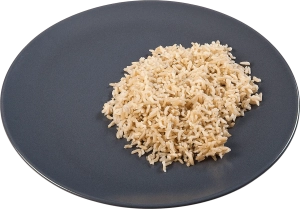
28g
Carbs
Brown Rice (small portion)
Weight = 95g
Carbs = 28g

69g
Carbs
Brown Rice (medium portion)
Weight = 155g
Carbs = 45g
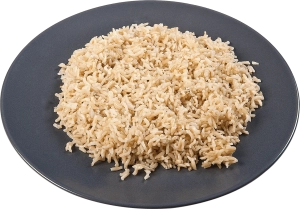
64g
Carbs
Brown Rice (large portion)
Weight = 218g
Carbs = 64g
Carbs in wild rice
Wild rice is actually the grain of four different species of grass, and originated from North America and China. Though technically not a rice, wild rice is commonly referred to as one for practical purposes.
Wild rice has a slightly nutty flavour and can be eaten hot or cold. It makes a great addition to a salad and is featured in some of the recipes in the Carbs & Cals Salads book.
100g of cooked wild rice has a similar amount of carbs as white and brown rice. However, it contains a much higher amount of fibre. Wild rice is also rich in nutrients and antioxidants.
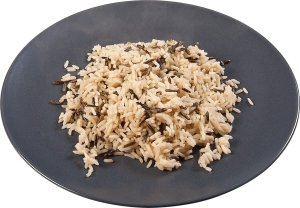
54g
Carbs
Wild Rice
Weight = 170g
Carbs = 54g
Carbs in black rice
Black rice isn’t commonly eaten in the UK compared to other types of rice. It has a distinct texture and sometimes turns purple once cooked. Black rice is high in fibre and also contains iron, protein and antioxidants.
In addition, black rice contains a high amount of anthocyanins, which are a flavonoid often found in other dark purple foods like blackberries. There is a link with foods containing flavonoids that have an anti-inflammatory effect on the body.
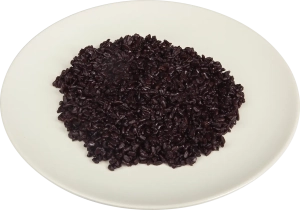
42g
Carbs
Black Rice
Weight = 150g
Carbs = 42g
Carbs in red rice
Red rice, also known as Camargue rice, is very similar to brown rice. Its colour is different due to the anthocyanins present. The red colour of this type of rice is considered to be an aesthetic enhancement to certain meals.
Similar to other non-white rice, red rice is a good source of fibre. It has a nutty taste and a chewy texture that some people enjoy. However, the flavour of red rice can be complex.
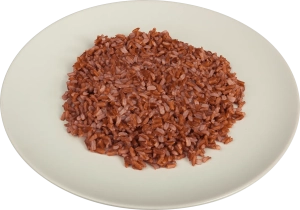
45g
Carbs
Red Rice
Weight = 150g
Carbs = 45g
Low carb rice options
There are a number of low carb rice alternatives for those looking to reduce their total carb intake with low carb foods, to help with weight loss or other health benefits. While you can find low carb rice substitutes at health food stores and grocery stores, it is possible to make your own with a food processor.
Cauliflower rice, for example, is simple to make. It contains almost no carbs and is also very low in calories. However, this does mean you will have to adequately replace the calories with protein or other veggies to maintain fullness. Broccoli can be used in the same way as cauliflower and is an excellent source of vitamin C.
Puy lentils are a low carb alternative for rice that is high in fibre and works well with fish dishes. Butternut squash makes a great rice substitute for risotto rice in risottos. There is also shirataki rice, a rice substitute that is made out of konjac, an Asian root vegetable.
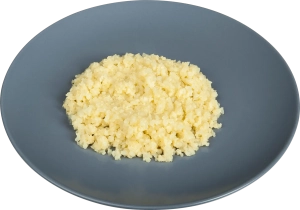
4g
Carbs
Cauliflower Rice
Weight = 150g
Carbs = 4g
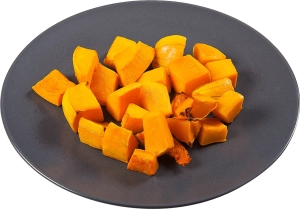
20g
Carbs
Butternut Squash
Weight = 265g
Carbs = 20g
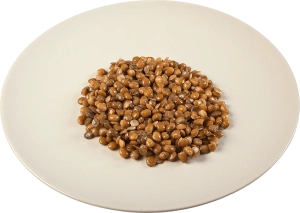
14g
Carbs
Lentils
Weight = 80g
Carbs = 14g
Carbs in risotto rice
Risotto is a short grain Italian rice. The most common types available in the UK are Arborio and Carnaroli, both of which have a similar carb content. Risotto can be made with a wide range of ingredients and can be a starter or main course.
Below are 3 portion sizes for a mushroom risotto, showing a starter size with 28g carbs up to a large portion containing 71g carbohydrates.
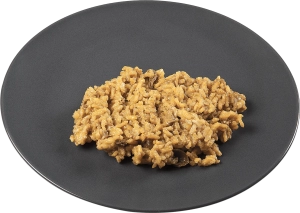
28g
Carbs
Mushroom Risotto
(small portion)
Weight = 160g
Carbs = 28g
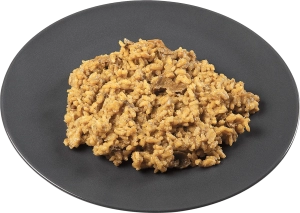
43g
Carbs
Mushroom Risotto
(medium portion)
Weight = 240g
Carbs = 43g
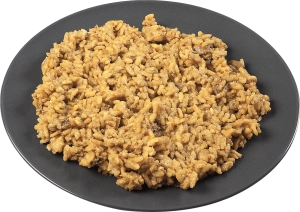
71g
Carbs
Mushroom Risotto
(large portion)
Weight = 400g
Carbs = 71g
Carbs in takeaway & restaurant rice
When you are eating out at a restaurant or ordering in from a takeaway, you will likely come across many different types of rice dishes. Whether as an accompaniment for a curry at an Indian restaurant or as part of your weekend Chinese takeaway, there is a huge variety of options.
Rice portions and cooking methods will vary based on the type of cuisine, such as Thai, Indian, Chinese, Italian and Mexican. They will also vary from restaurant to restaurant. For example, some Chinese restaurants may serve very large portions of egg fried rice, while others may have a small bowl of plain boiled rice. When estimating the carbs, it is helpful to compare the portion in the restaurant or takeaway to your typical portion at home to help estimate the carb content.
It is worth keeping in mind that while eating out or ordering in, it is likely that the serving size will be greater than what you would typically eat at home. So you may want to share a rice option if you are aiming to follow a low carb diet.
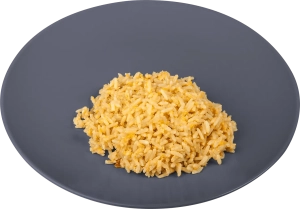
44g
Carbs
Coconut Rice
Weight = 150g
Carbs = 44g
Carbs in rice side dishes
There are a variety of rice side dishes available from different restaurants and takeaways. If ordering Chinese or Indian food, a typical serving size of rice will be around 70g to 100g of carbohydrates. This includes egg fried rice, special fried rice, boiled rice and pilau.
Other rice side dish options include rice & peas, a popular Caribbean side dish. Although it contains kidney beans, generally the dish is predominantly rice, so it shares a similar carb content to fried rice and pilau dishes.
Jollof rice is an African rice side dish that contains palm oil. It has a slightly lower amount of carbs, but it does have a high calorie content due to the amount of fat it contains.
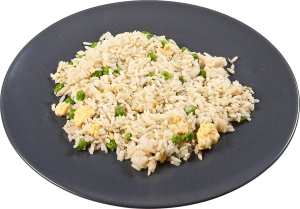
36g
Carbs
Special Fried Rice
Weight = 170g
Carbs = 36g

41g
Carbs
Pilau Rice
Weight = 170g
Carbs = 41g
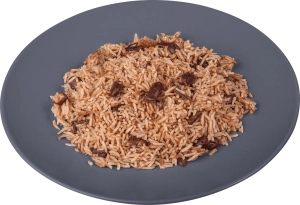
51g
Carbs
Rice & Peas
Weight = 200g
Carbs = 51g
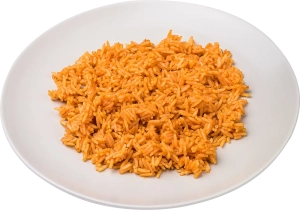
64g
Carbs
Jollof Rice
Weight = 300g
Carbs = 64g
Carbs in rice main dishes
Rice often forms the main part of a dish in many cuisines, such as risotto, sushi, paella, biryani and nasi goreng, to name a few. When eating a main dish that is predominantly rice, it is likely that the carb content will be relatively high. Therefore, if you are looking to limit carbs, you may wish to choose a different option, or have a half portion.
Below are 3 examples of main meal dishes showing a large restaurant or takeaway size portion.
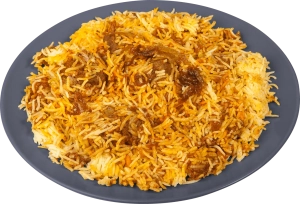
108g
Carbs
Chicken Biryani
Weight = 500g
Carbs = 108g
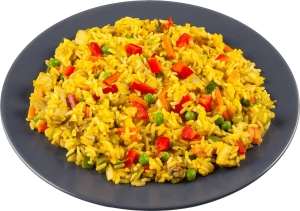
61g
Carbs
Nasi Goreng
Weight = 340g
Carbs = 61g
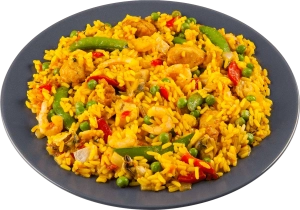
69g
Carbs
Paella
Weight = 450g
Carbs = 69g
Carbs in couscous
Couscous is one of the most popular grains. It is derived from wheat and can be a small grain, but also available as giant couscous. Couscous is a great accompaniment to a tagine or served cold in a salad, such as couscous with feta and harissa.
Whole wheat couscous, just like wholemeal bread, is a healthier option as it contains more fibre and has a lower glycemic index, meaning it will have a lower impact on blood glucose levels. Below are 3 examples of the different types of couscous. You can see that a medium portion contains around 50g of carbs.
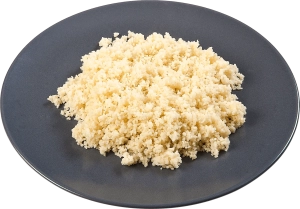
48g
Carbs
Couscous
Weight = 175g
Carbs = 48g
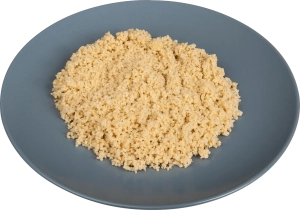
47g
Carbs
Wholewheat Couscous
Weight = 175g
Carbs = 47g
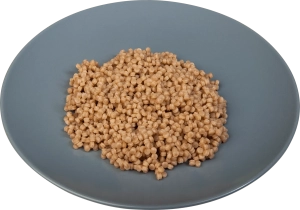
39g
Carbs
Giant Couscous
Weight = 150g
Carbs = 39g
Carbs in grains
There is a wide range of other grains that can make a good alternative to rice if you are trying to increase the variety of foods you eat. Different grains will work best with different dishes. For example, bulgur wheat is a higher fibre, lower carb alternative to couscous that can be used as an alternative to rice in a risotto, such as beetroot risotto, or used in salad.
Quinoa is gluten-free and lower in carbs than couscous and contains a relatively high amount of protein. It also contains good quantities of all the essential amino acids, meaning that it is a useful addition to a vegetarian or vegan diet. Pearl barley is a whole grain wheat that is excellent in soups or stews and can be used in place of rice in a risotto.
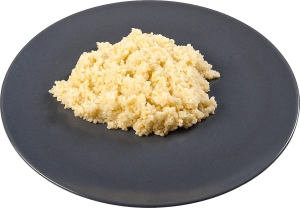
31g
Carbs
Bulgur Wheat
Weight = 200g
Carbs = 31g
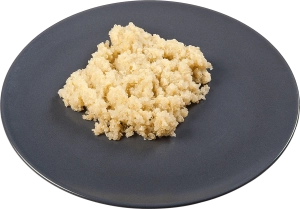
32g
Carbs
Quinoa
Weight = 172g
Carbs = 32g
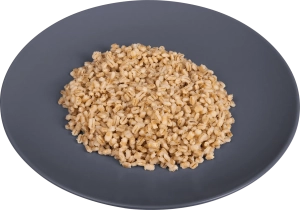
41g
Carbs
Pearl Barley
Weight = 150g
Carbs = 41g
Want to Learn More?
Grab a Copy of Carb & Calorie Counter
The multi-award-winning Carb & Calorie Counter book is your definitive, expert-approved guide to carb and calorie counting.
- Over 1700+ high-quality food photos
- Up to six portion sizes per food
- At-a-glance carbs and key nutrients
- The Original #1 Bestseller
With the “Carb-Counting Bible”, a single flick of the page is all you need to plan nutritious, carb-counted meals.
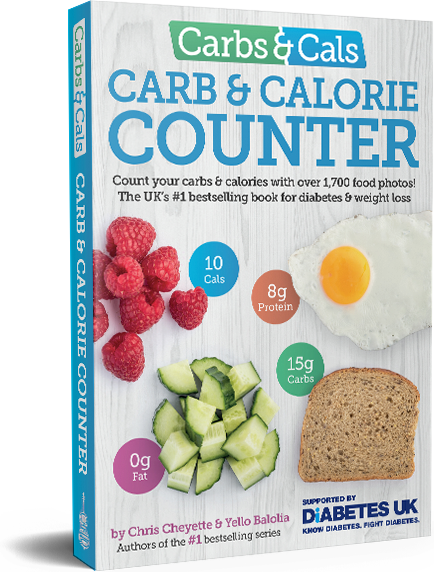
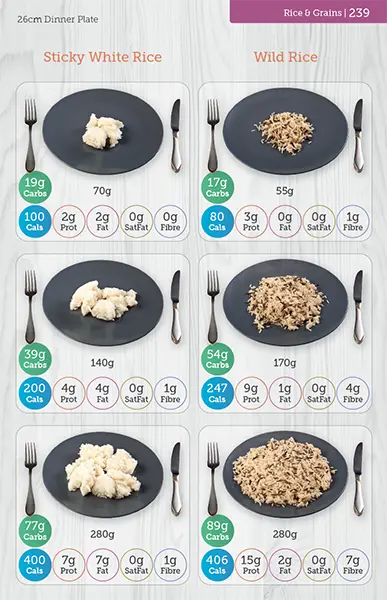
Contains a whole chapter with 60 photos of different types of rice & grains!
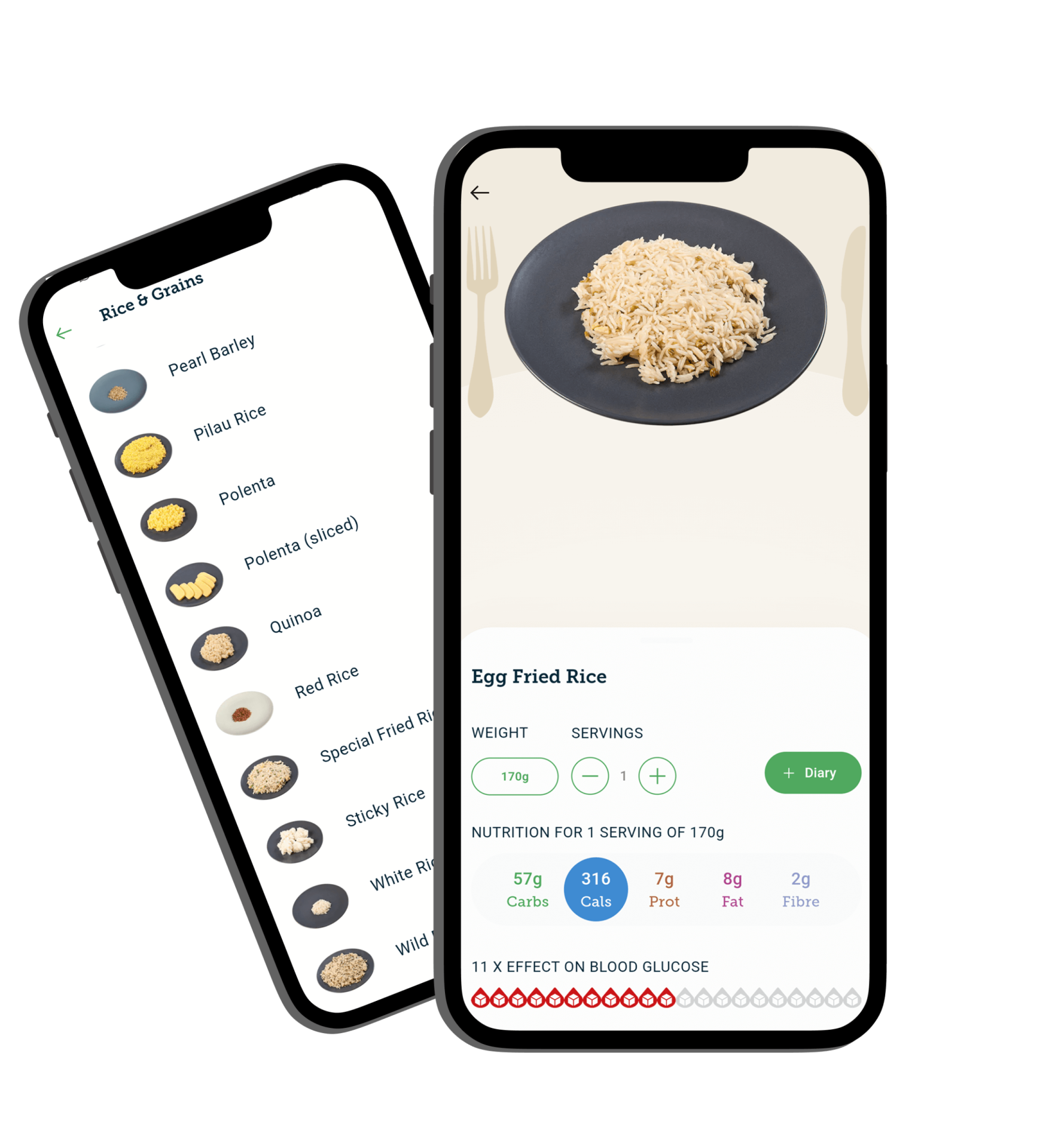
Sign up to the Carbs & Cals mailing list
Want to learn more about carb counting and the role of food in managing your health? Sign up to our mailing list!
